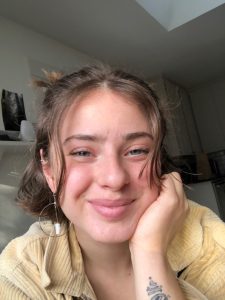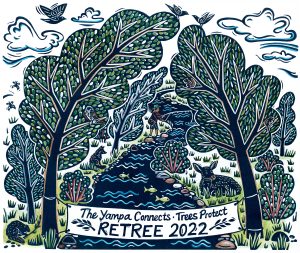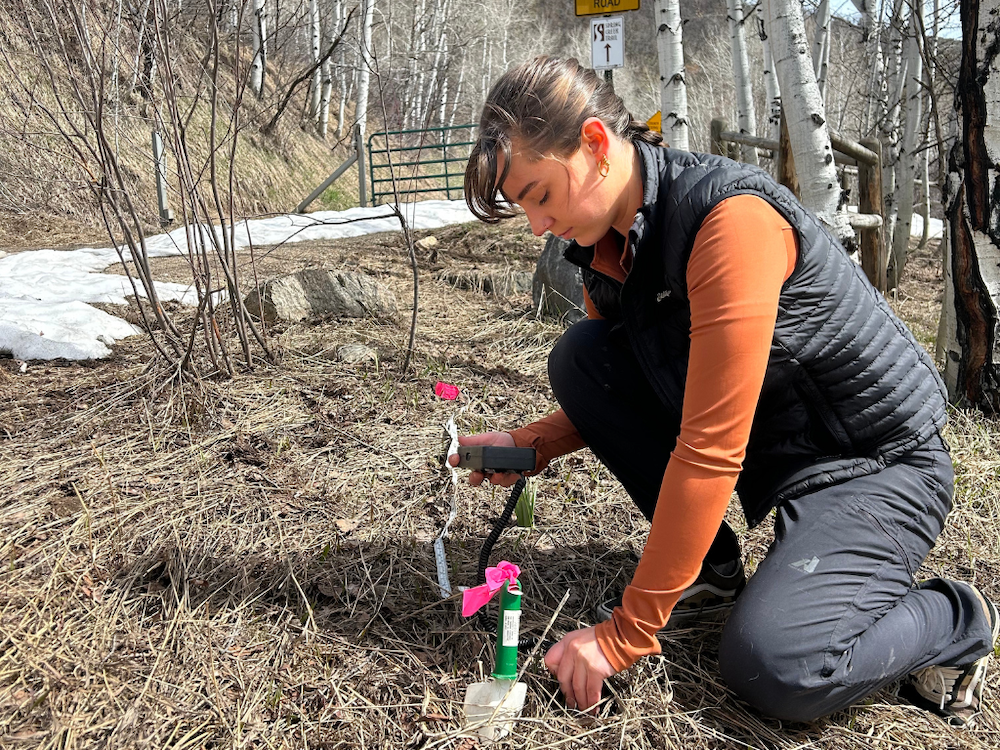Hello! My name is Marguerite Pilon, one of YVSC’s interns for the Fall 2022 term. For my project, I’m exploring the ways art can be used for science communication. I graduated from Seattle University last summer, where I studied Art and Design with a minor in Environmental Studies. My environmental work started to bleed into my artwork, and I found that I had a passion for  creating art that engaged with people around environmental topics and climate change-related issues. It was beautiful and exciting, and in conversations with professors, it seemed there was a need to communicate emerging research in an accessible way to people of every background.
creating art that engaged with people around environmental topics and climate change-related issues. It was beautiful and exciting, and in conversations with professors, it seemed there was a need to communicate emerging research in an accessible way to people of every background.
Art has the ability to combine scientific topics with beauty and emotion, allowing us to connect with our own humanness. Something important is ignited when we’re able to see a little bit of ourselves in these issues. It serves as a tool for education for people with any knowledge base, while sparking a long-term desire for change and action. One example of this is Paul Nicklen, a conservation photographer, who released The Delta Series this past month. This series of aerial photographs of the Colorado River Delta sparks a conversation about topics affecting our watersheds: soil moisture, drought, meltwater, and land management, while asking us to reflect on the interconnected nature of life on earth and our own role in these ecosystems.
To discover more about the intersections of art and environmental science, I got to speak with local artist and YVSC partner, Jill Bergman. Her beautifully detailed prints can be recognized across the Yampa Valley, and she has found a niche using art to  elevate issues of sustainability and conservation. She has created six years of artwork for YVSC’s ReTree reforestation event, the Yampa is Wild community mural for Friends of the Yampa, and turned interviews with wildlife photographers and biologists into zines. Her latest project connects with wildlife experts and local artists to create wildlife cards focused on ways to protect animals and reduce climate impacts!
elevate issues of sustainability and conservation. She has created six years of artwork for YVSC’s ReTree reforestation event, the Yampa is Wild community mural for Friends of the Yampa, and turned interviews with wildlife photographers and biologists into zines. Her latest project connects with wildlife experts and local artists to create wildlife cards focused on ways to protect animals and reduce climate impacts!
As many of us do in the Valley, Jill finds inspiration in the pristine beauty of our landscapes and the close connection to nature our home provides –
“I love to be outside, and I go on a pretty long walk or snowshoe with my dog most days. I’m inspired by the Yampa Valley views, the ever changing sky, and the river. I always keep an eye out for birds and other wildlife. I appreciate living in a small community with easy access to trails and different ways to spend time in nature.”
For art to be a successful means for communication and connection with people, it has to inspire real action. Jill agrees finding this balance is difficult, but that the value of art in the environmental world has always existed.
“Nature has inspired artists throughout history. So these days, when artists can promote protecting the natural world in this changing climate, it’s always worth doing! Learning to combine art and science is more challenging than it seems like it should be. But there are endless ways to combine art, science, environmental action, and community engagement.”
“Scientists have methods and routes of communication that don’t always reach the general public in an impactful way. But environmental organizations, artists, authors, policy makers, and activists each have their own ways of communicating that might reach and motivate different groups of people. We need everyone with their unique skills to help convey the issues in the way they do best and get people excited to participate in solutions.”
These issues can be difficult to deal with, and they are ever-present in our daily lives. The weight of climate change can lead to eco-anxiety, climate fatigue, and shutdown. How do we communicate complex, intricate, and sometimes upsetting issues in a way that educates, engages, and inspires tangible change? What we create and what we communicate has to emphasize the resilience inherent in the earth, and spark a wish to create a more sustainable future.
“I was scared about global warming, acid rain, polluted water, and the ozone layer starting when I was very young in the 1970s. My father constantly talked about those things related to his work as a water toxicologist, biologist, and person concerned about environmental issues. I finally figured out how to snap out of my feelings of helplessness when I realized that I’m not motivated by fear, I’m motivated by hope and action,” says Jill. “Scare tactics don’t get some people moving, they actually make them feel like giving up. I’ve found that stating some facts along with attainable action steps is very motivational. People want to participate and help, they just need to know how. And once you get started in taking action and being informed, it feels good to keep doing more!”
Alongside the mentorship of Jill, YVSC is looking for artists to partner with in these efforts.
If you are a local artist and are interested in getting involved, please contact me at marguerite@yvsc.org, or Kate Brocato at kate@yvsc.org for more information. We would absolutely love to see your work!






